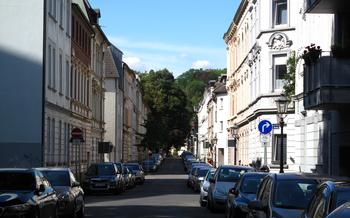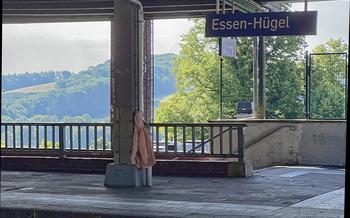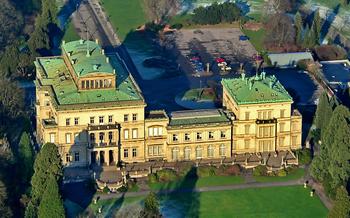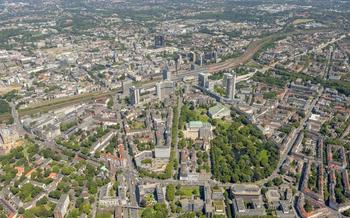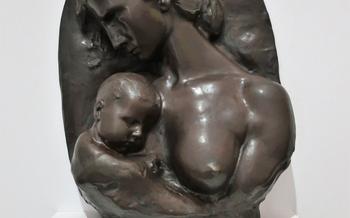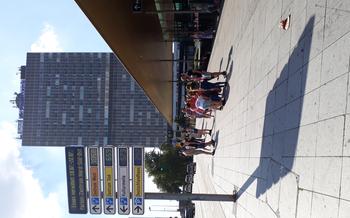
Krupp Historical Exhibition
- A Journey Through Industrial Heritage:
- Navigating the Exhibition Grounds
- Unveiling the Krupp Dynasty
- Steel and Innovation: The Cornerstones of Krupp's Success
- Exploring the Krupp Archives: A Treasure Trove of Industrial History
- Witnessing Industrial Grandeur: The Villa Hügel
- Krupp Park: A Legacy of Green Spaces
- Krupp: A Global Enterprise
- World War Legacy and Transformation
- Krupp's Social Impact: From Welfare to Education
- The Krupp Museum: Preserving Industrial Heritage
- Krupp: A Symbol of German Engineering Excellence
- Contemporary Krupp: Reshaping the Future
- Events and Exhibitions at the Krupp Historical Exhibition
- Insider Tip: Unveiling Hidden Treasures
A Journey Through Industrial Heritage:
Essen, a city in Germany's Ruhr region, rose to prominence as an industrial powerhouse in the 19th century. At the heart of this transformation was the Krupp family, whose entrepreneurial spirit and technological innovations shaped the city's industrial landscape. The Krupp Historical Exhibition, housed in the former Krupp headquarters, offers visitors a captivating journey through Essen's rich industrial past, showcasing the legacy of the Krupp dynasty and their contributions to German industry.
Navigating the Exhibition Grounds
The Krupp Historical Exhibition is conveniently located in the heart of Essen, Germany, at Altendorfer Str. 10It is easily accessible by public transportation, with nearby tram and bus stops. Admission fees vary depending on the type of ticket and any special exhibitions or events. Check the official website for up-to-date information on ticket prices and discounts.
The exhibition is housed in a series of historic buildings that were once part of the Krupp industrial complex. The layout is well-organized and informative, with each section dedicated to a different aspect of the Krupp family's history and their contributions to industry. Visitors can follow a chronological path through the exhibition, starting with the early days of the company and ending with its transformation into a modern technology enterprise.
To make the most of your visit, plan a route that aligns with your interests. If you are particularly interested in the Krupp family, focus on the sections that delve into their personal lives and achievements. If you are more interested in industrial history, explore the exhibits that showcase Krupp's innovations and their impact on various industries.
Unveiling the Krupp Dynasty
The Krupp family, a name synonymous with industrial prowess, played a pivotal role in shaping Essen's rise as a global industrial hub. Their entrepreneurial spirit and unwavering dedication to innovation transformed the city into a powerhouse of steel production and technological advancements.
At the heart of the Krupp legacy lies Alfred Krupp, a visionary industrialist who revolutionized steel manufacturing techniques and laid the foundation for the family's empire. His son, Friedrich Alfred Krupp, expanded the business further, introducing innovative products such as the seamless tire and the Krupp cannon.
Bertha Krupp von Bohlen und Halbach, a remarkable woman who took the reins of the company in the early 20th century, exemplified the Krupp spirit of resilience and innovation. Under her leadership, the company weathered the challenges of World War I and emerged stronger than ever.
Anecdotes and stories about the Krupp family abound, showcasing their impact on Essen and beyond. From Alfred Krupp's relentless pursuit of technological advancements to Bertha Krupp's unwavering commitment to social welfare, the Krupp dynasty left an indelible mark on the city's history.
Their legacy extends far beyond the walls of the Krupp Historical Exhibition. The Krupp family's contributions to industry, social welfare, and the arts continue to shape Essen's identity, making it a city where industrial heritage and modern innovation intertwine.
Steel and Innovation: The Cornerstones of Krupp's Success
The Krupp family's rise to prominence was inextricably linked to their mastery of steel production. Through continuous innovation, they revolutionized the industry and became renowned for their high-quality steel products. One of their most significant achievements was the development of the seamless tire, which eliminated the need for welding or riveting and significantly improved the safety and durability of railway wheels.
Krupp's innovations were not limited to steel production. They also made groundbreaking contributions to the armament industry. The Krupp cannon, with its advanced design and accuracy, became a symbol of German military prowess. It played a crucial role in the Prussian victory in the Franco-Prussian War of 1870-1871, solidifying Krupp's position as a leading manufacturer of artillery.
Beyond the steel and armament industries, Krupp's innovations touched various other sectors. They were pioneers in the development of steam engines, mining equipment, and shipbuilding technology. Their relentless pursuit of innovation and technological advancements transformed entire industries and propelled Krupp to the forefront of German industrial development.
Exploring the Krupp Archives: A Treasure Trove of Industrial History
The Krupp Archives, housed within the Krupp Historical Exhibition, offer a fascinating glimpse into the rich history of the Krupp family and their industrial empire. This vast collection of historical documents, photographs, and artifacts provides researchers and enthusiasts with an invaluable resource for studying the development of industrial Germany.
The archives hold a wealth of personal letters, blueprints, contracts, and other documents that shed light on the Krupp family's business dealings, technological innovations, and personal lives. Visitors can explore the archives' holdings, which span from the early days of the company in the 19th century to its transformation into a global enterprise in the 20th century.
Highlights of the archive's collection include:
-
Personal letters and diaries of Krupp family members, offering insights into their thoughts, feelings, and motivations.
-
Detailed blueprints and technical drawings of Krupp's innovative products, such as the seamless tire and the Krupp cannon.
-
Historic contracts and agreements that document Krupp's collaborations with other companies and governments around the world.
The Krupp Archives are open to researchers and enthusiasts by appointment. Visitors can request access to specific documents or browse the collection with the assistance of archivists. The archives also offer educational programs and workshops for students and the general public.
Witnessing Industrial Grandeur: The Villa Hügel
Amidst the bustling city of Essen, a magnificent architectural marvel stands as a testament to the Krupp family's legacy: Villa Hügel. This opulent residence, built between 1870 and 1873, served as the opulent home of the Krupp family for over a century. Designed by renowned architect Alfred Krupp, the villa is a masterpiece of the Italian Renaissance Revival style, showcasing intricate stone carvings, elegant terraces, and sprawling gardens.
Inside, the villa is adorned with lavish furnishings, exquisite artwork, and a collection of rare artifacts that reflect the family's wealth and influence. Visitors can admire the grand ballroom, the opulent dining room, and the cozy library, each adorned with intricate details and offering a glimpse into the lavish lifestyle of the Krupp family.
Beyond its architectural splendor, Villa Hügel has played host to numerous historical events. It served as a meeting place for industrialists, politicians, and royalty, and its walls have witnessed significant decisions that shaped the course of German industry. During World War II, the villa was used as a military hospital, and after the war, it was briefly occupied by the British Army.
Today, Villa Hügel has been transformed into a museum, offering visitors a unique opportunity to explore the history of the Krupp family and their impact on Essen. The museum houses a vast collection of documents, photographs, and personal belongings that shed light on the family's private lives and their role in shaping the city's industrial landscape.
A visit to Villa Hügel is a journey through time, offering a glimpse into the lives of one of Germany's most influential industrial dynasties. Whether you're a history buff, an architecture enthusiast, or simply seeking a glimpse of opulence, Villa Hügel promises an unforgettable experience.
Krupp Park: A Legacy of Green Spaces
Amidst the industrial heritage of Essen, the Krupp family left a lasting legacy of green spaces that transformed the city's landscape. Once bustling factory sites, these areas have been reborn as the serene Krupp Park, a testament to Essen's commitment to sustainability and green spaces.
Strolling through the park, visitors are greeted by a tapestry of verdant lawns, tranquil ponds, and towering trees, creating a haven of tranquility amidst the urban sprawl. Sculptures and artistic installations dot the landscape, adding a touch of whimsy and inspiration to the natural surroundings.
One of the highlights of Krupp Park is the Margarethenhöhe, a charming garden city built in the early 20th century. Designed by Margarete Krupp, the daughter of Alfred Krupp, Margarethenhöhe was intended to provide affordable housing for the company's workers. Today, it stands as a testament to the Krupp family's social conscience and their commitment to improving the lives of their employees.
Another notable feature of the park is the Kruppsee, a man-made lake created from a former quarry. Surrounded by lush greenery, the lake invites visitors to relax by its shores, enjoy a leisurely boat ride, or simply admire the picturesque views.
Krupp Park is not just a beautiful green space; it also serves as a reminder of Essen's industrial past. The park's transformation from industrial sites to a serene oasis symbolizes the city's ability to adapt and reinvent itself, while honoring its heritage.
Whether you're seeking a peaceful retreat, a place to admire art and nature, or simply a glimpse into Essen's industrial history, Krupp Park offers a unique and captivating experience for visitors of all ages.
Krupp: A Global Enterprise
The Krupp empire extended far beyond the borders of Essen, leaving an indelible mark on the world stage. Its businesses spanned multiple countries, fostering international collaborations and partnerships that propelled technological advancements across the globe. Krupp's steel mills, machinery factories, and shipyards were renowned for their cutting-edge innovations, attracting customers and partners from around the world. The company's global reach was not limited to its physical presence; its ideas, inventions, and engineering prowess crossed borders, influencing industries and shaping the course of technological progress. Krupp's international partnerships and collaborations were instrumental in driving innovation and fostering cross-cultural exchange, demonstrating the company's commitment to progress and its impact on the global industrial landscape.
World War Legacy and Transformation
The Krupp legacy is inextricably linked to the history of World War I and World War II. During these tumultuous periods, the company played a significant role in arms production, supplying the German military with weapons and equipment. Krupp's involvement in the war effort, particularly the production of artillery pieces such as the infamous "Big Bertha," remains a contentious issue.
In the aftermath of World War II, Krupp faced immense challenges. The Allied forces dismantled the company's industrial facilities and imposed strict restrictions on its operations. The Krupp family was stripped of their leadership roles, and the company underwent a radical transformation. The Krupp empire was broken up, and its assets were dispersed among various successor companies.
Despite these setbacks, Krupp managed to rebuild and reinvent itself. The company focused on diversifying its operations, moving beyond arms production into new industries such as steel, shipbuilding, and machinery. Krupp also played a significant role in the reconstruction of Germany, contributing to the country's economic recovery.
The Krupp legacy continues to shape the company's identity and reputation. The company acknowledges its past involvement in war production and has taken steps to address its historical responsibilities. Krupp has supported research into its wartime activities and has established educational programs to promote peace and understanding.
The company's transformation from a war profiteer to a global leader in sustainable technology demonstrates its resilience and ability to adapt to changing circumstances. Krupp's legacy is a complex and multifaceted one, reflecting both its contributions to German industry and its involvement in some of the darkest chapters of history.
Krupp's Social Impact: From Welfare to Education
The Krupp family was renowned for its commitment to social welfare and the betterment of its employees' lives. Their philanthropic endeavors extended far beyond the factory gates, leaving a lasting impact on the community of Essen.
Housing projects initiated by the Krupps provided affordable and comfortable living spaces for their workers. These developments, such as the Margarethenhöhe and the Altenhof, showcased innovative urban planning and architectural design. The Krupps also established healthcare facilities, including the Krupp Hospital, which offered advanced medical care to employees and their families.
Education was another key area of focus for the Krupps. They founded several educational institutions, including the Krupp School and the Krupp University, to provide opportunities for workers and their children to acquire skills and knowledge. These institutions played a crucial role in shaping the future workforce and fostering social mobility within the community.
The Krupps' social programs went beyond financial contributions. They actively engaged with their employees, promoting a sense of community and belonging. Family events, sports clubs, and recreational activities organized by the company fostered camaraderie and a strong work-life balance.
The Krupp family's commitment to social welfare and education not only improved the lives of their employees but also contributed to the overall development and prosperity of Essen. Their legacy continues to inspire businesses and organizations to prioritize social responsibility and invest in the well-being of their workforce.
The Krupp Museum: Preserving Industrial Heritage
In the heart of Essen, the Krupp Museum stands as a testament to the city's industrial legacy. Established in 1961, the museum is housed in a former Krupp administration building and offers a comprehensive exploration of the company's history, products, and innovations.
Step inside to embark on a journey through time, where interactive displays and immersive exhibits bring to life the story of Krupp's rise to prominence. Witness the evolution of steel production, marvel at the engineering marvels that revolutionized industries, and learn about the social impact of the Krupp family on the city of Essen.
The museum's collection boasts a treasure trove of artifacts, including machinery, tools, and models that showcase Krupp's contributions to various fields. From the iconic Krupp cannon to the innovative seamless tire, each exhibit tells a story of ingenuity and engineering prowess.
Hands-on experiences and interactive displays make learning about industrial history engaging and accessible for visitors of all ages. Whether you're a history buff, an engineering enthusiast, or simply curious about the rise of industrial giants, the Krupp Museum offers a captivating glimpse into the world that shaped modern Germany.
Krupp: A Symbol of German Engineering Excellence
Krupp products have long been synonymous with German engineering excellence. The company's reputation for quality, innovation, and precision has made it a global leader in various industries, including steel, shipbuilding, and machinery.
Krupp's contributions to steel production are particularly notable. The company pioneered the development of the seamless tire, which revolutionized the railway industry. Krupp's innovations in steelmaking also played a crucial role in the construction of some of the world's most iconic landmarks, such as the Eiffel Tower and the Golden Gate Bridge.
In the shipbuilding sector, Krupp was responsible for building some of the world's largest and most advanced vessels. The company's shipyards produced warships, merchant ships, and passenger liners that set new standards for naval engineering and maritime transportation.
Krupp's machinery division was equally renowned for its innovations. The company produced a wide range of machinery for various industries, including mining, construction, and manufacturing. Krupp's machines were known for their durability, reliability, and efficiency, making them highly sought after by customers worldwide.
Today, Krupp's legacy of engineering excellence continues to influence German engineering and manufacturing. The company's commitment to quality, innovation, and precision remains a driving force behind Germany's reputation as a global leader in industrial production.
Contemporary Krupp: Reshaping the Future
The Krupp Historical Exhibition is not merely a testament to the past; it also sheds light on the contemporary relevance of the Krupp legacy. The Krupp Group, as it exists today, is a modern technology company that has undergone a remarkable transformation, transitioning from its industrial roots to a focus on sustainable energy solutions. This shift reflects the changing landscape of the 21st century, where innovation and sustainability are driving forces of progress.
Krupp's current operations encompass a diverse range of businesses, including renewable energy technologies, waste management solutions, and advanced materials. The company's commitment to sustainability is evident in its focus on developing and implementing cutting-edge technologies that reduce environmental impact and promote a greener future.
This transformation is a testament to Krupp's ability to adapt to evolving global needs. By embracing sustainability as a core principle, Krupp is ensuring its continued relevance and success in a rapidly changing world. The company's legacy of innovation and engineering excellence continues to shape its identity, guiding it towards a future where sustainability and technological advancement go hand in hand.
Events and Exhibitions at the Krupp Historical Exhibition
The Krupp Historical Exhibition is not merely a static display of industrial artifacts; it is a vibrant hub of educational and cultural activities. Throughout the year, the exhibition hosts a variety of events, workshops, and temporary exhibitions that delve deeper into the rich history of the Krupp family and their industrial empire. These events offer visitors a chance to engage with experts, learn from historians, and experience hands-on activities that bring industrial history to life.
Regular workshops and lectures provide an opportunity to gain insights from scholars, engineers, and former Krupp employees. These experts share their knowledge on topics ranging from steel production techniques to the social impact of the Krupp family. Visitors can participate in discussions, ask questions, and gain a deeper understanding of the complex history of Essen's industrial heritage.
Temporary exhibitions showcase specific aspects of Krupp's history or feature collaborations with other museums and institutions. These exhibitions often focus on lesser-known stories, innovative technologies, or the impact of Krupp's activities on a global scale. Visitors can explore interactive displays, view rare artifacts, and learn about the latest research findings in the field of industrial history.
To make the most of your visit, check the exhibition's website or social media pages for upcoming events and exhibitions. Plan your visit accordingly to coincide with a particular event or exhibition that interests you. This will enhance your experience and provide a deeper understanding of the Krupp legacy and its impact on Essen and beyond.
Insider Tip: Unveiling Hidden Treasures
Beyond the main attractions of the Krupp Historical Exhibition, there are hidden gems waiting to be discovered by curious visitors. Delve deeper into the exhibition's nooks and crannies to uncover lesser-known stories and overlooked exhibits.
-
Secret Archives: Venture into the hidden depths of the exhibition to find the secret archives, where you can uncover fascinating documents and artifacts that shed light on the Krupp family's private lives and business dealings.
-
Forgotten Machinery: In the far corner of the exhibition hall, you'll find a collection of forgotten machinery and tools that once played a crucial role in Krupp's industrial operations. These relics offer a glimpse into the company's early days of innovation.
-
Private Family Photos: Amidst the grand portraits and formal photographs, there are hidden albums containing intimate family photos that capture the Krupps in their personal moments, revealing a more human side of the industrial dynasty.
-
Overlooked Documents: Buried within the vast collection of documents, you might stumble upon overlooked contracts, letters, and blueprints that provide insights into the company's decision-making processes and collaborations.
-
Hidden Artwork: The exhibition also houses a collection of hidden artwork, including sculptures, paintings, and tapestries, which offer a glimpse into the Krupp family's artistic patronage and personal tastes.
Exploring these hidden treasures will reward you with a deeper understanding of the Krupp dynasty and their impact on Essen and the world. So, take your time, wander off the beaten path, and uncover the secrets that lie within the Krupp Historical Exhibition.
